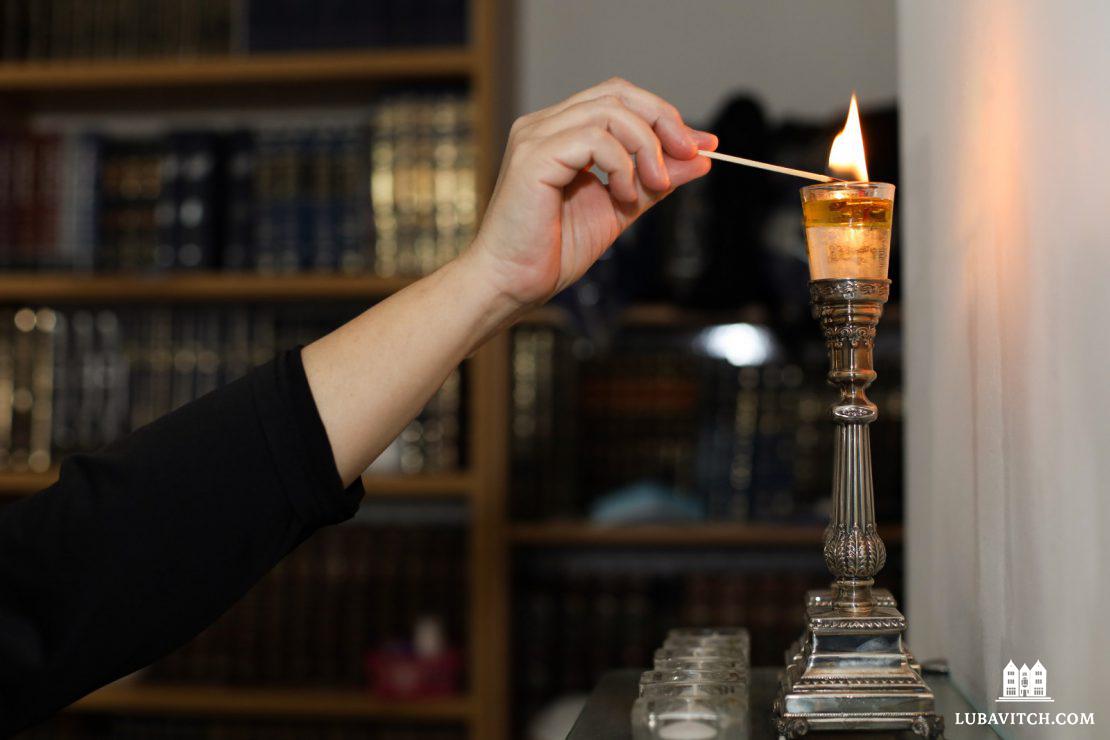Rabbi Yoel Kahn, the preeminent Chasidic scholar and legendary expositor of the Lubavitcher Rebbe’s teachings, once devised a thought experiment with some pretty eye-opening results:
Imagine that it’s the Seder night, and a Jew is sitting at home. There’s some matzah on the table in front of him, but this individual is not interested. Three thousand years of tradition notwithstanding, he doesn’t plan on eating any unleavened bread tonight.
Suddenly, an intruder bursts into the house. Brandishing a weapon, he puts forth an ultimatum: That Jew had better eat the halachically mandated minimum of matzah—or else. Without any choice in the matter, and entirely against his will, he slowly reaches for the matzah. Unwillingly, he eats the entire required amount.
Has this person fulfilled the biblical commandment to eat matzah on the first night of Passover?
Reb Yoel’s answer is categorical: “Clearly, this man was not thinking about the great miracles that G-d wrought for the Jewish people during the Exodus,” he says. “Nevertheless, the Torah rules that such a Jew has fulfilled his obligation.”
This is a startling statement, one that, for some readers, will confirm long-held suspicions about Orthodox Judaism, and Chabad in particular. Visions of black-hatted Chasidic youths proffering a pair tefillin or a lulav, urging them to do a mitzvah in the middle of the street, will flit before their eyes: Aha! So this really is what religious observance comes down to. It’s just a bunch of mindless traditions, empty of any real spirituality or feeling. Is this really what Judaism is about?
It’s a good question, and with Passover just around the corner, it’s a timely one, too. The Seder is, after all, the quintessence of Jewish ritualism: Nowhere is the commitment to traditional, strictly regulated, almost mechanized, religious protocol more conspicuous. The word itself, seder, means “order,” referring to the specific sequence of actions—drinking, washing, dipping, eating, reciting, reclining, and so on—that comprise this highly ritualized festive meal.
The likelihood of being fed the afikoman by an armed assailant is not very high, of course. In most Jewish homes, force-feedings are committed by concerned grandparents, more likely to be wielding weaponized Jewish guilt and the weight of family tradition than any other instrument of force. But in an important sense, the result is the same, and the same questions apply. If I’m not interested in the matzah, then why should I eat it? If I’d like to recall the story of the Exodus my own way, in my own time, why shouldn’t I?
***
That Judaism is excessively ritualistic is one of the oldest charges leveled against it. Early Christians like Paul of Tarsus and Tertullian claimed that the dictates of halachah were crude and oppressive regulations, Laws of the Flesh that had been superseded by those of the Spirit. Kosher laws, Shabbat, and circumcision were meant as spiritual precepts, they felt; to observe them as physical commandments was to diminish them. The notion that G-d could be interested in such crass concerns was absurd, even embarrassing.

Christendom retreated in time, and intellectual sands shifted, but disdain toward the Jewish proclivity for practical religion stayed. Immanuel Kant, the leading philosopher of the Enlightenment, thought that Judaism scarcely measured up as a religion at all, since its commandments “are directed to absolutely nothing but outer observance.” When reason is the measure of all things, as it was for Kant, it becomes impossible to account for, say, the irrational lengths we go to in cleaning the house before Pesach.
You don’t have to be an Enlightenment thinker or a strict rationalist to be uncomfortable with religious ritual, either. Even as the New Age and similar movements have brought spirituality back in vogue, traditional observance still comes across as stale, stodgy, and without spontaneity. Our own age’s obsession with personal identity and individualistic meaning-making makes the notion of inheriting a set of practical religious duties, whether from one’s family or community, as unfashionable as ever. Just because Hillel ate his matzah sandwich like so, all those years ago, why should I?
Given the arguments arrayed against ritualism, its persistence is all the more striking. The Seder has existed in its current form, with only a few differences, since Talmudic times. The biblical mitzvot—like eating matzah and bitter herbs—of course date back further than that, to Sinai, and to Egypt. Seder after Seder, century after century, in Exile, in gulags, and in lockdown, these faithful traditions have endured. Before tearing the fence down, we must consider why it was put up in the first place—and what has kept it up all this time.
Many such explanations have been offered. In some of his earliest writings on the psychology of religion, Freud memorably compared the “observances by which believers give expression to their piety” to the “obsessive actions” sometimes observed in “sufferers from nervous affections.” Obsessive-compulsive disorder, in other words, is its own kind of private religion. But of course such a comparison—which he acknowledged was imperfect—also goes the other way, and so has the effect of pathologizing religion, as “a universal obsessional neurosis.” Indeed, contemporary psychologists have noted that ritualistic behaviours often emerge when people experience negative emotions like anxiety, depression, trauma, and so on. Does this mean that they are unhealthy?
Quite the opposite: Harvard researchers Francesca Gino and Michael Norton say that the reason rituals are so ubiquitous is because they work. Performing some symbolic act or having a prescribed set of actions to follow can provide a person with a sense of stability and order in times of chaos or anxiety. In particular, after experiencing loss—whether of a trivial or traumatic nature—they restore a sense of control, which in turn alleviates feelings of grief. Intriguingly, Gino and Norton write that rituals even appear to benefit people who claim not to believe that they accomplish anything!
Taking this to the next logical step, a recent small but deeply interesting book, The Power of Ritual: Turning Everyday Activities into Soulful Practices, recommends simply making up your own rituals.
Author Casper ter Kuile, a fellow at the Harvard Divinity School, shows how to foster spiritual experiences within contemporary life by “composting old rituals,” as he puts it, in order “to meet our real-world needs, and speak to our hunger for meaning and depth.” Though not Jewish himself, or religious, he ardently observes a “tech sabbath” every week, from sundown on Friday night until dusk on Saturday night, writes of his fascination with religious dietary laws like kashrut, and even draws on ideas from the Chasidic and Mussar movements.
Most people in the United States, ter Kuile explains, no longer rely on a single religious community to fill their lives with purpose and connection, and so he proposes mining insights from all the world’s “wisdom traditions.” Once stripped of their original religious context—“liberated,” as he puts it—these “gifts of tradition” can be appreciated without any of the uncomfortable and hard-to-understand parts. Nature hikes take the place of pilgrimage, and the Harry Potter children’s fantasy series can be transformed into sacred text.
Does that mean we ought to just strip-mine the Seder for the fun bits, and toss away the dross?
Not just yet: For one, ter Kuile himself seems to walk back this kind of cultural dilettantism later in the book, when he advises against participating in ayahuasca ceremonies (a kind of psychedelic shamanic ritual). He is wary of picking out such exciting elements of foreign cultures “without understanding the deeper significance and context” (also, hallucinogens). Instead, he advises learning more about “the hidden gems of our own backgrounds and cultures.” One might well say the same of Shabbat and kashrut, not to mention the Seder.
But there’s another reason that jettisoning the traditional Seder in favor of your own, bespoke reinterpretation of the Exodus story would be a serious loss. It is this aspect of Jewish ritual that explains our thought experiment, and which can help us appreciate its true power and potential.
***
There is some overlap between how psychologists explain the purpose of ritual and the traditional account. Sefer HaChinuch, a thirteenth-century encyclopedic survey of all 613 commandments, regularly repeats the dictum: After the deed, so goes the heart. In other words, practical commandments are intended to foster certain feelings or positive character traits.
In Chabad Chasidic thought, however, the deeper purpose of a mitzvah is realized the moment it is performed, regardless of the emotions it may engender later on. The physical act itself is a way of connecting with G-d, with each commandment serving as another conduit to the Divine. But why should this be so? If the spiritual benefits of physical rituals were dubious to begin with, the idea that they can help us connect with a higher power sounds absurd.
And it is. In truth, the idea of a finite being doing anything to access the Infinite is an absurdity. More than implausible, it is a category error, like trying to add up enough zeroes to equal one. It’s like trying to walk to the moon—as long as you stay on Earth, you’ll just keep walking in circles, each footfall as earthbound as the one before. In much the same way, every finite step we take is just further confirmation of our finitude.
But if an Infinite Being wants a connection with a mortal? Of course that’s possible for Him to do; by definition, He can do anything.
This is precisely what a Divine commandment is: When G-d asks something of us, He is saying He cares about what we do or don’t do. By concerning Himself with the affairs of the finite—whether, for example, we eat matzah on Pesach—He allows for the possibility of connection, by creating a space for us to leave our own frame of reference, and enter a realm that has been made significant on G-d’s terms. The matzah is charged with infinite potential power, and the act of eating closes the circuit, letting that Divine energy course through, from the Commander, through the command, and ultimately to the commanded.

The Torah’s view is implied in the very etymology of the word: The Hebrew word mitzvah, traditionally rendered as “commandment,” is related to the Aramaic cognate tzavta, or “connection.” The latter term is also employed in modern Hebrew, to mean “together.”
We’re accustomed to thinking of spiritual practices like meditation as the obvious way to get close to G-d, or of intellectual enlightenment as the pinnacle of religious experience. But this is only because we forget that an Infinite G-d is as distant from the spiritual as He is from the physical. The truth is, as the Alter Rebbe writes in Tanya, that even a perfectly righteous person must step outside of himself if he wants to approach G-d; the very act of thinking about and perceiving G-d implies a distinct subject that is outside of Him. The peak of religious life, then, is not to be found in the subjective self, but in the objective act.
This explains the Kahn experiment. Forcing down the minimum amount of matzah under the threat of violence is nobody’s idea of a perfect Seder. Ideally, we are supposed to be fully present during the performance of any mitzvah, so that we can invest ourselves completely into our service of G-d. And yet, there is some danger in placing too much weight on the subjective. When taken too far, a focus on feelings and lived experience is ultimately a turn towards the self, an inward retreat that makes genuine connection with an Other impossible. Thus, in the final count, if we must choose between feeling and doing, doing wins out.
This is the great power of Jewish rituals: They allow us to connect with something outside ourselves. If instead I simply choose to create and curate whichever traditions I happen to most enjoy, then all I’m left with is more of me. Trying to touch the transcendent without ever abandoning my own subjectivity is like lifting myself up by my own bootstraps.
***
We live in an atomized age, in which people are less likely than ever to be bound by the traditional institutions of community and family. For many of us, this sense of social isolation was made even more acute during the recent lockdowns. For the better part of a year, society has retreated inward like never before. We’ve been confined to our homes; shut out of schools, synagogues, and places of work; deprived of normal human interaction, all of which has induced a powerful sense of disconnection, dislocation, and rootlessness.
Perhaps rituals can also help restore this broader sense of connectedness we so desperately need.
The objective aspect of the ritual gives it a wonderfully equalizing, and unifying, quality. When we perform a given mitzvah, like eating the Hillel sandwich at the Seder, each of us experiences the act in a slightly different way. At that stage in the evening, one person might be thinking about the meal up ahead, while another finds herself absorbed by the historical personage of Hillel, and a third is swept away by the various Kabbalistic intentions associated with that part of the Seder. Three subjects, three different experiences. On the objective plane, however, they are absolutely one.
This is true both around the table, and across time: By observing the specific minutiae of the Seder together with guests, hosts, families, neighbors, and Jews around the world, we find ourselves bound in a vast, elaborate, intergenerational ceremony. With its themes of memory and transmission, the sense of being connected to those who came before us and to those whom we precede is particularly strong on the Seder night. We might think or feel it differently, but from Moses on down, we all eat the matzah the same way.
To illustrate the importance of the mitzvot, that is, of practical religious ritual, the Mishnah in Pirkei Avot famously uses the metaphor of rootedness:
Rabbi Eliezer the son of Azariah would say . . . one whose wisdom is greater than his deeds, what is he comparable to? To a tree with many branches and few roots; comes a storm and uproots it, and turns it on its face.
As impressive and important as the canopy of a tree is, with its intricate system of branches, boughs, and leaves—representing one’s learning and sense of spirituality—it is the roots that keep the whole thing from falling apart and keeling over:
But one whose deeds are greater than his wisdom, to what is he compared? To a tree with many roots and few branches, whom all the storms in the world cannot budge from its place.
So it is at the Seder, and with our magnificent ritual tradition. These practices are a vital and indispensable part of our faith, not just some vestigial ornaments from a more primitive age. As we repeat the Seder each year, our roots sink ever deeper, infusing our lives with community, connection, and permanence. As we have observed them, so have they preserved us.
This article appeared in the Lubavitch International Magazine – Spring 2021 issue. To subscribe and gain access to previous magazines please click here.

Be the first to write a comment.